Ozark Fisheries Molds Martinsville the “Goldfish Capital of the World”

Photo credit: Nathan Lambrecht
Millions of the bright orange ornamental fish swimming in aquariums at pet stores and carnivals or gliding through the water in backyard ponds were raised in Martinsville.
“Goldfish are one of the most well-known of all fish,” says Margaret Cleveland, fourth-generation fish farmer and vice president of operations for Ozark Fisheries, who runs the business with her brother, Joseph. “But no one ever thinks about where goldfish come from.”
Ozark Fisheries has been raising fish since 1926. The first location in Stoutland, Missouri, operated as a trout hatchery, but the introduction of pet departments in store chains, such as Woolworth’s, led them to shift their focus to goldfish.
“In the 1880s and 1890s, goldfish were a novelty item,” Cleveland says. “The fish were being imported in small numbers, but no one was growing them in the United States.”
Ozark Fisheries seized the opportunity to become a major fish supplier, and in the 1970s, purchased another location in Martinsville, which earned the town the moniker “Goldfish Capital of the World.”
See more: Indiana Seedling Program Helps Reestablish 3,850 Acres of Forest a Year

Photo credit: Nathan Lambrecht
Spawning Success
Today, goldfish and koi – along with fathead minnows and other feeder fish – are raised in 300 1-acre ponds. Instead of lining the ponds with plastic, the fishery takes advantage of the rich Indiana soil.
“When you have good quality soil, you raise a better crop of fish because that soil produces good bloom in the water, and the biomass naturally feeds the fish,” Cleveland says. “The soil in Indiana also has good clay content, so it holds water well.”

Joseph Cleveland, pictured with his wife, Sarah, and children, Bally and Mary, oversees his family business, Ozark Fisheries, in Martinsville with his sister, Margaret. Photo credit: Nathan Lambrecht
In the spring, fish are hatched in the on-site spawning facility, and the baby fish, called fry, are moved to the outdoor ponds at 2 days old. The fish are stocked in ponds at different rates: Fish in more populated ponds stay smaller than those in ponds with fewer fish.
The goal is to raise the fish until they reach a mature size and transition from muted camouflage colors to bright hues. It takes about 60 to 90 days for goldfish and koi to reach maturity – but Cleveland admits that losses are high.
“Fish have a very low survival rate,” she says. “As farmers, we’re always working to improve our farm, and we do whatever we can to increase the chances for as many fish to survive as possible.”
The spawning and hatching are done indoors, and fish are placed outdoors in clean ponds to minimize the likelihood of coming in contact with bugs, bacteria or predators. Four generations of experience have allowed Ozark Fisheries to significantly improve their process and raise more than 125 million fish annually.
See more: New Generation Dairy Embraces Sustainable Practices to Protect Farmland and the Planet

Ozark Fisheries employees gather koi from one of the ponds. Photo credit: Nathan Lambrecht
Casting a Line to the Future
Once they reach maturity, goldfish and koi are shipped to wholesalers, pet stores, carnivals and garden centers throughout North America. Shipping large numbers of small fish posed a challenge and forced Ozark Fisheries to be creative.
Fish are shipped in a Golfipak, an oxygen-inflated plastic bag filled with goldfish and water that’s sealed and shipped inside corrugated cardboard boxes. It’s a patented product Ozark Fisheries developed in the 1950s. It took five years of test shipments before the United States Postal Service approved the packaging process for mailing, and it’s now the preferred shipping method in the goldfish and tropical fish industries.
At every step of the process, from spawning to shipping, Cleveland feels confident that the business is swimming in the right direction.
“There are a lot fewer fish farms than there ever were in my dad’s generation and my grandfather’s generation,” she says. “As we approach our 100th anniversary, we’re really excited about keeping our farm alive and continuing on to the next generation.”
See more: Hydroponic Farming Takes Root in Indiana



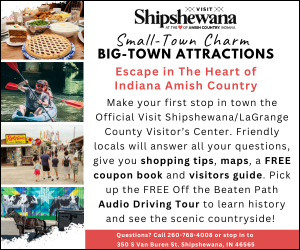
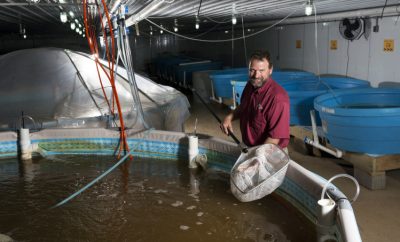
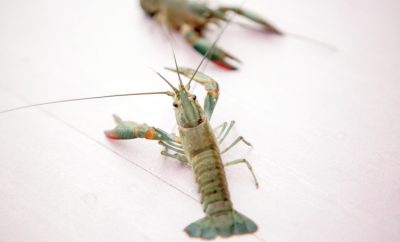
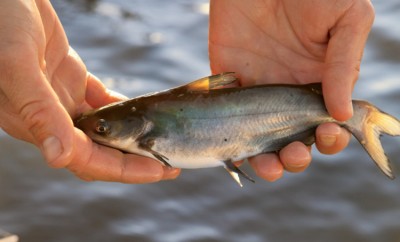
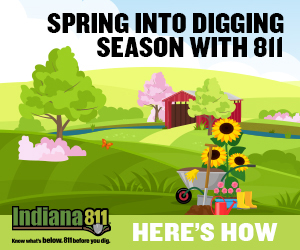

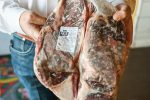



 My Indiana Home is produced for Indiana Farm Bureau members. Our mission is to connect you with the food you eat, the Indiana farmers who grow it and a rural lifestyle that is uniquely Hoosier.
My Indiana Home is produced for Indiana Farm Bureau members. Our mission is to connect you with the food you eat, the Indiana farmers who grow it and a rural lifestyle that is uniquely Hoosier.
SCreed
May 16, 2023 at 10:55 am
Do they do field trips? For Small and large groups?